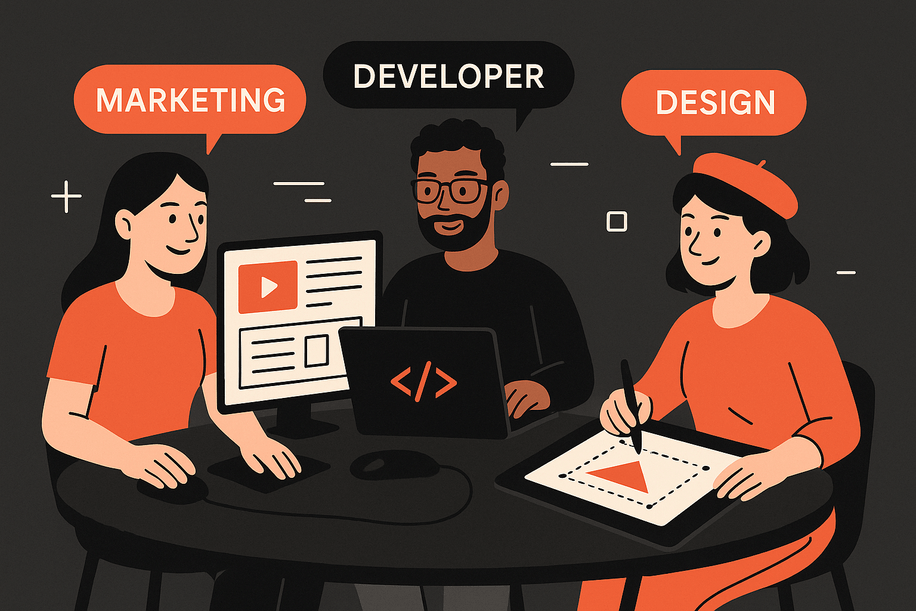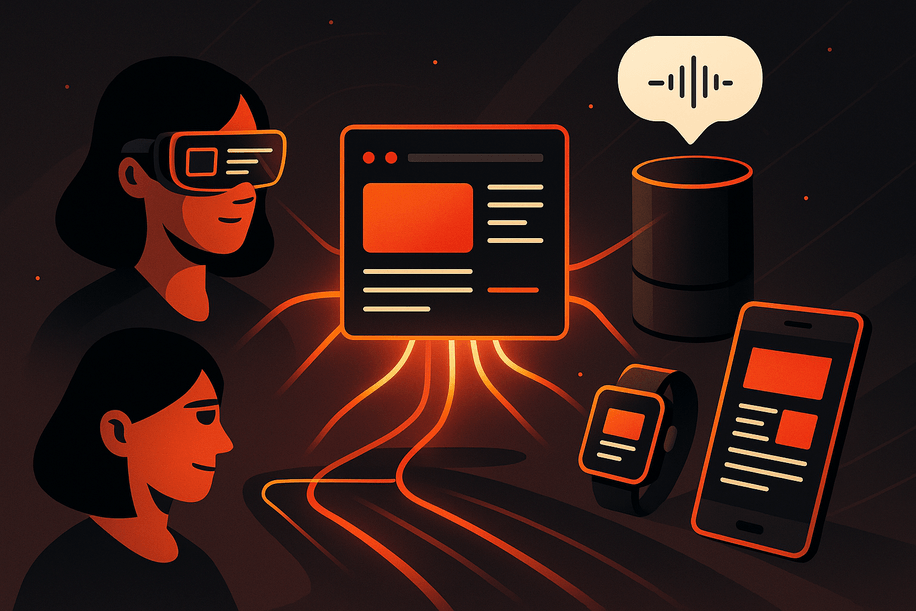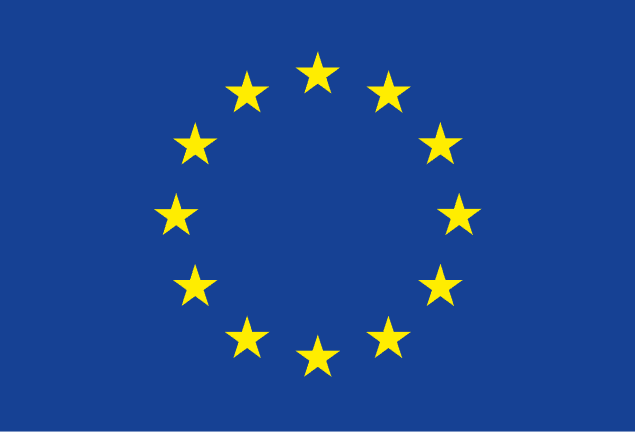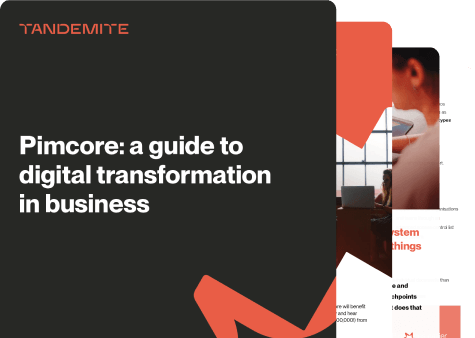When content management gets too complex, it’s not a good system. The case for headless CMS

When publishing workflows are slower than content creation, the root cause is rarely the content – it’s usually the system. Legacy CMS solutions are often burdened with unnecessary complexity, impacting productivity and team morale. If your tech stack makes content harder to ship, what’s the point?
A modern, headless CMS can remove these barriers, enabling seamless delivery across all platforms. It’s time to evolve your digital infrastructure for agility and scale.
Here’s what we’ll unpack in this article:
- The business cost of CMS complexity
- Traditional vs headless CMS: A functional comparison
- Operational warning signs
- Quantifiable benefits of headless architecture
- Financial considerations and payback horizon
The business cost of CMS complexity
Traditional CMS platforms were not built for today’s digital demands.
What begins as an organically built content management setup – relying on plug-ins, ad-hoc integrations, and departmental work-arounds – will ultimately face a breaking point where each additional feature brings more complexity than value.
The effects of this situation include:
- Delayed time‑to‑market: Marketers and developers are often dependent on each other – routine updates require coordination, and design changes need dev time. Marketing campaigns stall, and agility suffers.
- Operational risk: Upgrade cycles become high‑risk events as dependencies between plug‑ins and custom code are poorly documented.
- Fragmented governance: Multiple repositories duplicate content, creating inconsistency, legal exposure, and accessibility gaps.
In the end, these problems add up to lost opportunities and reduced responsiveness to market change. Complexity in this case is not an asset. It’s hidden technical debt that erodes efficiency.
Traditional vs headless CMS: A functional comparison
There’s a reason your competitors are shipping content faster than you.
Your competitors aren’t just producing more content – they’re iterating, localizing, and scaling it effortlessly across platforms because they’ve gone headless. While you’re waiting on dev cycles to push a blog post live, they’re running omnichannel campaigns across five markets, A/B testing landing pages, and integrating personalized content into apps and digital experiences in real time.
Does headless mean “no UI for editors”? Good vendors provide a modern, drag‑and‑drop back office – just separated from your front‑end codebase.
| Aspect | Traditional (coupled) CMS | Headless CMS |
|---|---|---|
| Architecture | Single application combining content repository, templating, and delivery layer | Content repository exposed via REST or GraphQL API; presentation handled by an independent front‑end |
| Omnichannel delivery | Primarily web; mobile and IoT require additional middleware | Native for web, mobile apps, kiosks, wearables, voice assistants, etc. |
| Upgrade impact | Core and plug‑ins upgraded together; high regression risk | Backend upgrades isolated; front‑end remains unaffected |
| Performance optimization | Influenced by server‑side rendering constraints | Front‑end optimized independently (static‑site generation, edge caching, CDN) |
| Security surface | Application exposed to the internet | API gateway plus static assets; reduced attack surface |
| Content reuse | Copy-paste pages | Structured blocks delivered anywhere |
Operational warning signs
You should consider moving to a headless CMS when you encounter three or more of these common issues:
1️⃣ Release timelines conflict with business targets. If the CMS cannot safely support weekly updates, strategic marketing initiatives will fall behind.
2️⃣ Content needs to be recreated for each channel. This introduces compliance risks and inefficiencies.
3️⃣ Developers are needed for non-technical edits. Engineering teams spend time on tasks like copy edits instead of driving product enhancements.
4️⃣ Plug-in conflicts are frequent after updates. Maintenance time increases, and system reliability decreases.
5️⃣ Regional roll‑outs require new CMS instances. Global brands face inconsistent user experiences and higher localization costs.
6️⃣ Security patches trigger emergency releases. Teams are forced into a constant state of urgent response, draining resources.
TL;DR ➡️ Multiple systems are the norm. 47 % of organizations operate two to three separate CMS platforms, while a further 27 % run four or more. (Source: Storyblok.com) ➡️ Legacy workflows are slow. 49 % of users of traditional CMS require more than one hour to publish a single content item. (Source: Storyblok.com) ➡️ Decoupling content from presentation reduces technical debt, accelerates delivery across web, mobile, IoT, and emerging channels, and strengthens security posture. |
Quantifiable benefits of headless architecture
Accelerated publishing
Headless architecture enables content to be created and managed in a structured, reusable format. Once published, this content can be automatically distributed across multiple channels: websites, mobile apps, kiosks, smartwatches, or even voice assistants.
This eliminates repetitive manual updates and significantly reduces content cycle times, often accelerating delivery by days or even weeks. Marketing teams can launch campaigns or make updates in real time.
Performance gains
By decoupling the front-end from the back-end, developers can leverage static site generation (SSG) and edge delivery techniques. These approaches serve pre-rendered pages from geographically distributed content delivery networks (CDNs), dramatically reducing latency and improving metrics such as page load speed, interactivity, and visual stability.
The result: enhanced Core Web Vitals, which directly contribute to better SEO rankings, lower bounce rates, and higher conversion rates.
Team autonomy
Headless systems foster a division of responsibilities that enhances productivity:
- Marketers can use visual, no-code editors to manage content. They iterate quickly on messaging, layout, or A/B testing without engineering involvement.
- Developers can focus on building fast, flexible frontends with the tools and frameworks they prefer. They are not constrained by CMS templating systems.
- Designers can update styles, layouts, and branding via design systems without disrupting ongoing content operations or developer tasks.
This parallel workflow shortens release cycles and minimizes cross-functional bottlenecks.
Read more about the advantages of headless CMS for users, marketers, and developers.

Future‑proof design
Content stored in a headless CMS is clean, structured, and typed (often in JSON or similar formats), which makes it easy to repurpose for future technologies.
This separation from presentation logic allows the same content to power not just current digital experiences (e.g., websites, apps), but also emerging platforms like augmented reality (AR), mixed reality (MR), voice assistants, IoT interfaces, or AI-powered copilots.
Businesses adopting headless now are preparing their content ecosystems for long-term flexibility and innovation.

Security hardening
Traditional CMS platforms often expose backend services directly to the public web, increasing the attack surface. In contrast, headless systems typically expose only static front-ends or APIs, reducing vulnerability. Since many headless CMSs are SaaS-based, they come with managed security updates, automated patches, and rigorous compliance standards handled by the provider. This offloads maintenance from internal teams while significantly enhancing the overall security posture.
Financial considerations and payback horizon
Even though subscriptions might look more expensive than old on-premise licenses, the extra cost is usually covered in 12 to 18 months through three main areas:
1. Flexible infrastructure: Cloud‑native backend scales automatically, removing the need for costly capacity planning.
2. Less maintenance: Ongoing platform maintenance, including updates and security patching, is handled by the vendor, easing the load on in-house IT resources.
3. Faster profits: You can launch new features and campaigns quicker, bringing in revenue that might be lost with slower systems.
To really see the return on investment, make sure your total cost of ownership model includes both obvious costs (like licenses and support) and hidden ones (like downtime, developer time, and compliance risks).
Tandemite’s team specializes in guiding enterprises through the transition from coupled to headless architectures.
We implement and support three market‑leading headless CMS platforms: Storyblok, Strapi, and Contentful – selecting the stack that is in line with each client’s governance model, performance envelope, and budget.
Each addresses a different operational profile:
- Storyblok – Ideal for marketing‑led organizations that require an intuitive visual editor, component‑level localization, and rapid landing‑page iteration.
- Strapi – Best suited to businesses seeking an open‑source core, on‑premises or private‑cloud deployment options, and fine‑grained role‑based access control.
- Contentful – Preferred by enterprises with global scale and a need for an extensive marketplace of pre‑built integrations.
We align technical strategy with business objectives, implement scalable content models, and ensure knowledge transfer to internal teams. Join us on the tandem whenever you’re ready!






